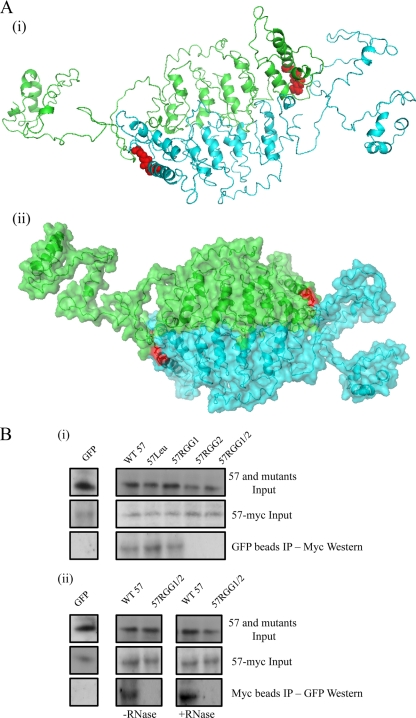Fig. 6.
Site-directed mutagenesis of the carboxy-terminal RGG2 motif affects the ability of the ORF57 protein to self-associate. (A) The ORF57 amino acid sequence was analyzed using the I-TASSER database to predict the monomer structure. The monomer structural prediction was then imported into Maestro (Schrodinger) and free energy minimized. Possible dimer interfaces were identified manually, and selected structures were subjected to molecular dynamics to aid in the identification of possible conformations. A molecular model of the putative ORF57 dimer (i) and a 50% transparent space-fill model with ribbons (ii) are shown. The RGG motif is indicated in red. (B) For subpanel i, 293T cells were transfected with pORF57-myc in the presence of either pGFP, pORF57GFP, or ORF57 mutants. After 24 h, cell lysates were included with GFP-Trap-Affinity beads. Precipitated proteins were detected by Western blot analysis using myc-specific antibody. For panel ii, 293T cells were transfected with pORF57-myc in the presence of either pGFP, pORF57GFP, or p57RGG2. After 24 h, cell lysates were either mock treated (left panel) or RNase treated (right panel) for 30 min and then precipitated with Myc-Affinity beads. Precipitated proteins were detected by Western blot analysis using GFP-specific antibody.

